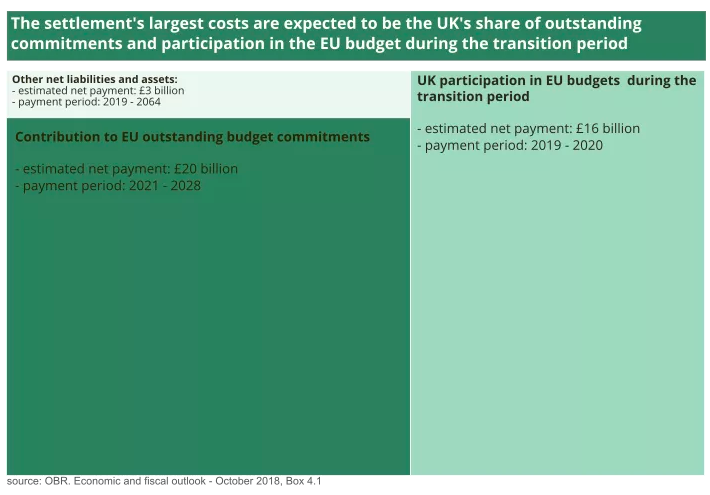Brexit bill: Understanding the £39bn divorce payment

The UK is preparing to pay out an estimated £39bn ($50bn) to settle its Brexit divorce with the European Union, a figure that has proven to be controversial as some have urged the government to withhold any payment when Britain breaks out of the EU.
Members of parliament will be debating the Brexit divorce agreement on Thursday in the House of Commons ahead of their vote on the deal on Tuesday.
Here’s what you need to know, based on a new report from the House of Commons Library:
The amount isn’t set in stone
The financial settlement isn’t set at exactly £39bn.
Instead, the deal “sets out the commitments that will be settled, how payments will be calculated and when payments will be made. It does not set out the actual amounts that the UK will pay,” noted researcher Matt Keep in the House of Commons Library.
The amount is meant to cover the UK’s share of its EU spending commitments that it made whilst it was an EU member. So it will continue to pay into the EU budget until the end of any Brexit transition period, which is currently expected to run until the end of 2020. Meanwhile, the UK will still receive some money back from the EU for certain programmes during that time, as if it was still a normal member state. Between 2019 and 2020, the total bill is expected to reach £16bn.
The UK is expected to spend a total of £20bn between 2021 and 2028 based on long-term spending commitments it already agreed on.
Another long-term financial commitment involves paying the pensions of EU staff who worked on behalf of the UK and wider EU. These payments could last into the 2060s.

75% of costs will be paid over four years
The UK is expecting to pay three-quarters of its Brexit bill in the next four years. The following image from the House of Commons shows how payments will peak and then drop off sharply.

Could the UK refuse to pay?
If British MPs do not approve the current Brexit deal that was hammered out by the EU and UK prime minister Theresa May, the financial settlement “will not become legally binding”, according to Keep. So it’s possible the country could leave the EU without paying the bill.
Even so, the UK is still expected to make some form of payout to avoid angering its powerful ally and largest trading partner.
“The government’s view is that it has financial obligations that it will meet and not doing so could see the UK portrayed as an unreliable partner,” Keep said in his report. “Future collaboration between the UK and EU could be difficult if the EU feels that the UK hasn’t settled its account … It seems probable that politics and economic considerations will lead to the UK and EU negotiating an alternative settlement.”
Making the payment will also be crucial to avoid challenges in international courts.
The UK is set to leave the EU on 29 March 2019 at 11PM local time.
RELATED: What is a no-deal Brexit? The key things you need to know

 Yahoo Finance
Yahoo Finance 